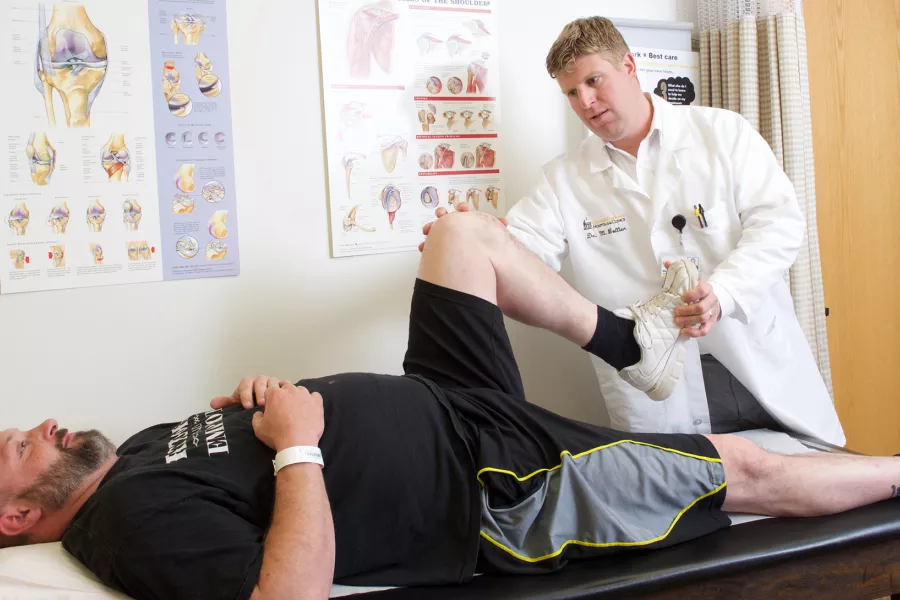Running smart for injury-free miles
Running can be great for your health, but injury risks are high, especially if you’re a novice runner.
Up to 65% of all runners have a running-related injury in any given year. To help you avoid that fate, University of Iowa sports medicine specialists have created exercises to maximize your performance.
The program has three stages: dynamic warmups, plyometric workouts, and strength workouts. Read on to see how these separate efforts can contribute to injury-free miles.
How dynamic warmups help runners
Dynamic stretching is a form of stretching that works the muscles and joints used on runs. Doing this type of stretching before every run can help prepare your body and reduce your risk of injury.
When you perform dynamic stretches, you are actively moving your joints and muscles. It prepares you for running by:
- Getting more blood and oxygen to your muscles
- Raising your core body temperature
- Helping your joints move more smoothly
It’s important to note the difference between dynamic stretching and static stretching, which is when you hold a position for an extended period of time. Static stretching is best after you exercise, when your body is warm and loose. Do some dynamic stretching before every run and before you perform plyometric exercises described later in this article.
In the video, exercises are performed over a span of about 15 feet to make it easy for you to see how they’re done. When you do these stretches, you can perform each one over a span of up to 40 feet. Find a distance that works best for you. If you’re not sure, start with a shorter distance.
Plyometric exercises train your joints to move properly
Plyometric exercises prepare your body to make the quick, forceful movements that propel you as you run. These exercises improve your control, strength, and power so that your legs perform those movements better.
Joint movement is measured in degrees, the same kind of degrees you use to measure an angle, such as a 90-degree angle. When you run, the joints in your legs can move at speeds of up to 1,000 degrees per second.
The plyometric exercises listed below simulate the rapid joint movements involved in running, which can ultimately help you avoid injury.
One of the perks of these exercises is that they can be performed indoors or outdoors. However, stick to a flat surface and try to avoid concrete or other hard surfaces that could injure you if you fall.
Watch the video and read below to see some examples of plyometric exercises:
- Ladders, line hops, and dot hops require markings on the floor to guide where you need to move. You can make your own markings using tape or other flat materials. Don’t use objects that could cause you to trip or lose your balance if you step on them.
- Matrix jacks require an elastic band that you can buy online or at a sporting goods store.
- Box hoppers require a step aerobics box, or you can use the bottom step of a sturdy staircase.
Your feet should land softly with each plyometric step. Avoid hard landings or stomping your feet.

Get expert care
Our specialists can perform a detailed analysis of your running style to see if you’re at risk for an injury.
Strength workouts for runners
When you run, you’re asking the muscles in your legs to support two to three times your body weight with every step. Strength exercises build muscles so you can run more effectively and avoid injuries.
As a runner, do strength training two to three days a week for the muscles that are highly involved in the act of running: calves, thighs, hips, and core muscles.
In particular, the following exercises (also shown in the video) are recommended for runners:
- Heel raises
- Split squats
- Romanian deadlifts
- Planks
- Lunges
- Step-downs
The exercises in this program are intended for runners who are not currently injured and who are in proper physical condition to participate in an exercise program that includes running. Please consult your primary care provider or physical therapist before starting this or any other exercise program.